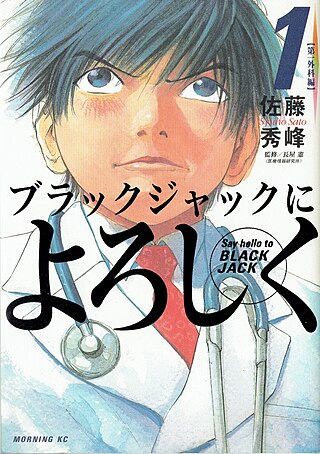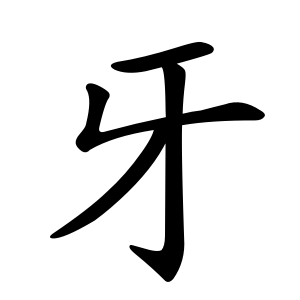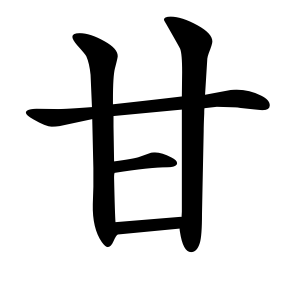Related Research Articles
Japanese may refer to:

Onomatopoeia is the use or creation of a word that phonetically imitates, resembles, or suggests the sound that it describes. Common onomatopoeias include animal noises such as oink, meow, roar, and chirp. Onomatopoeia can differ by language: it conforms to some extent to the broader linguistic system. Hence, the sound of a clock may be expressed variously across languages: thus as tick tock in English, tic tac in Spanish and Italian, dī dā in Mandarin, kachi kachi in Japanese, or tik-tik in Hindi and Bengali.

Hepburn romanization is the main system of romanization for the Japanese language. The system was originally published in 1867 by American Christian missionary and physician James Curtis Hepburn as the standard in the first edition of his Japanese–English dictionary. The system is distinct from other romanization methods in its use of English orthography to phonetically transcribe sounds: for example, the syllable is written as shi and is written as cha, reflecting their spellings in English.

Kanji are the logographic Chinese characters adapted from the Chinese script used in the writing of Japanese. They were made a major part of the Japanese writing system during the time of Old Japanese and are still used, along with the subsequently-derived syllabic scripts of hiragana and katakana. The characters have Japanese pronunciations; most have two, with one based on the Chinese sound. A few characters were invented in Japan by constructing character components derived from other Chinese characters. After the Meiji Restoration, Japan made its own efforts to simplify the characters, now known as shinjitai, by a process similar to China's simplification efforts, with the intention to increase literacy among the common folk. Since the 1920s, the Japanese government has published character lists periodically to help direct the education of its citizenry through the myriad Chinese characters that exist. There are nearly 3,000 kanji used in Japanese names and in common communication.

Oden is a type of nabemono consisting of several ingredients such as boiled eggs, daikon or konjac, and processed fishcakes stewed in a light, soy-flavored dashi broth.
No or NO may refer to:

Seinen manga (青年漫画) is an editorial category of Japanese comics marketed toward young adult men. In Japanese, the word seinen literally means "youth", but the term "seinen manga" is also used to describe the target audience of magazines like Weekly Manga Times and Weekly Manga Goraku which cater specifically to men's interests, and are marketed towards a demographic of young adult men between the ages of 18 and 40. Seinen manga are distinguished from shōnen manga which are for young teen boys, although some seinen manga like xxxHolic share similarities with shōnen manga. Seinen manga can focus on action, politics, science fiction, fantasy, relationships, sports, or comedy. The female equivalent to seinen manga is josei manga.
A demonym or gentilic is a word that identifies a group of people in relation to a particular place. Demonyms are usually derived from the name of the place. Demonyms are used to designate all people of a particular place, regardless of ethnic, linguistic, religious or other cultural differences that may exist within the population of that place. Examples of demonyms include Cochabambino, for someone from the city of Cochabamba; French for a person from France; and Swahili, for a person of the Swahili coast.
A justice ministry, ministry of justice, or department of justice, is a ministry or other government agency in charge of the administration of justice. The ministry or department is often headed by a minister of justice or a secretary of justice. In some countries, the head of the department may be called the attorney general, for example in the United States. Monaco is an example of a country that does not have a ministry of justice, but rather a Directorate of Judicial Services that oversees the administration of justice. Vatican City, a country under the sovereignty of the Holy See, also does not possess a ministry of justice. Instead, the Governorate of Vatican City State, the legislative body of the Vatican, includes a legal office.

Champon, also known as Chanpon, is a noodle dish that is a regional cuisine of Nagasaki, Japan. There are different versions in Japan, Korea and China. The dish was inspired by Chinese cuisine.
In diplomacy, an attaché is a person who is assigned to the diplomatic or administrative staff of a higher placed person or another service or agency. Although a loanword from French, in English the word is not modified according to gender.
The 214 Kangxi radicals, also known as Zihui radicals, were collated in the 18th-century Kangxi Dictionary to aid categorization of Chinese characters. They are primarily sorted by stroke count. They are the most popular system of radicals for dictionaries that order characters by radical and stroke count. They are encoded in Unicode alongside other CJK characters, under the block "Kangxi radicals", while graphical variants are included with in the "CJK Radicals Supplement".
Japanese dictionaries have a history that began over 1300 years ago when Japanese Buddhist priests, who wanted to understand Chinese sutras, adapted Chinese character dictionaries. Present-day Japanese lexicographers are exploring computerized editing and electronic dictionaries. According to Nakao Keisuke (中尾啓介):
It has often been said that dictionary publishing in Japan is active and prosperous, that Japanese people are well provided for with reference tools, and that lexicography here, in practice as well as in research, has produced a number of valuable reference books together with voluminous academic studies. (1998:35)
The Daijisen is a general-purpose Japanese dictionary published by Shogakukan in 1995 and 1998. It was designed as an "all-in-one" dictionary for native speakers of Japanese, especially high school and university students.

Radical 92 or radical fang (牙部) meaning "tooth" or "fang" is one of the 34 Kangxi radicals composed of 4 strokes.

Radical 95 or radical profound (玄部) meaning "dark" or "profound" is one of the 23 Kangxi radicals composed of 5 strokes.

Radical 98, also known as the radical tile (瓦部) meaning "tile" is one of the 23 Kangxi radicals and is composed of 5 strokes.

Radical 99 or radical sweet (甘部) meaning "sweet" is one of the 23 Kangxi radicals composed of 5 strokes.